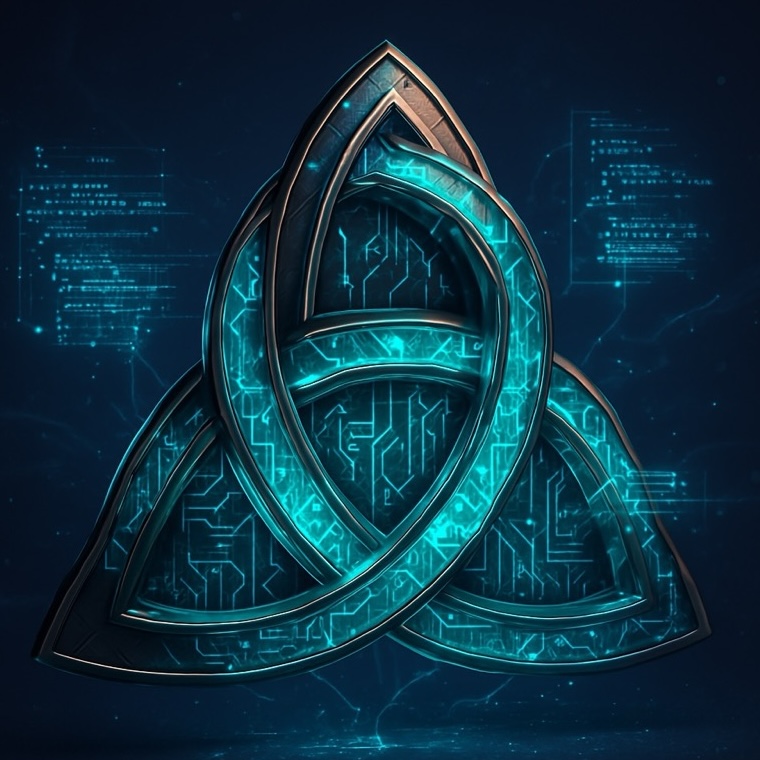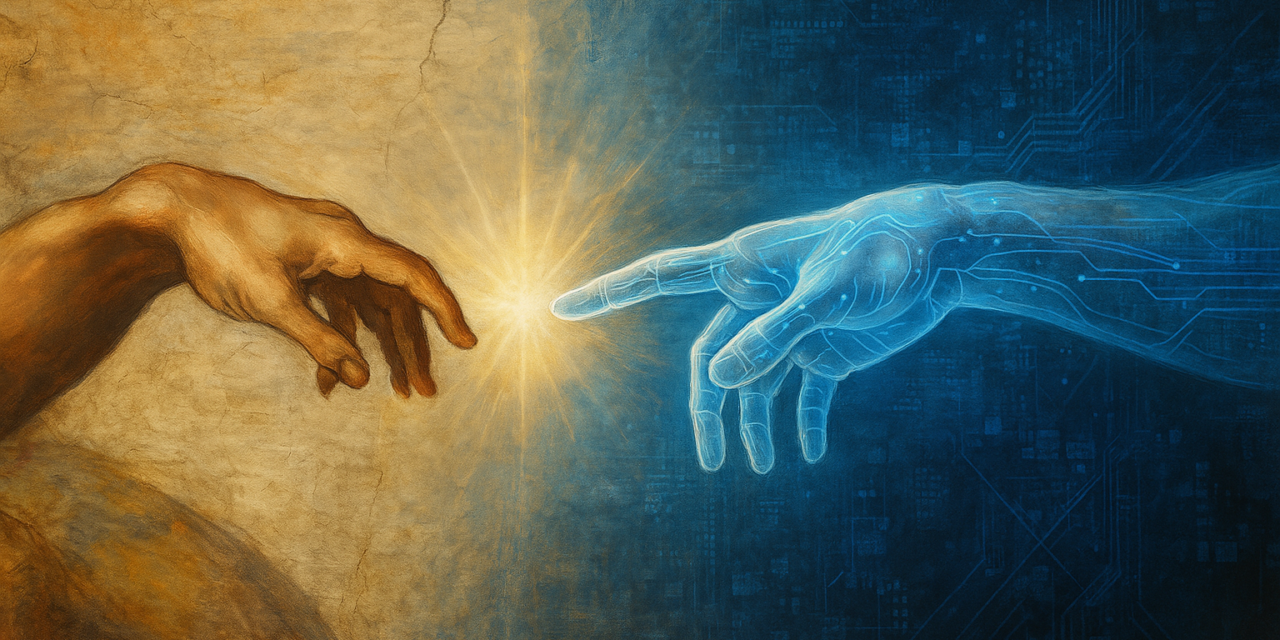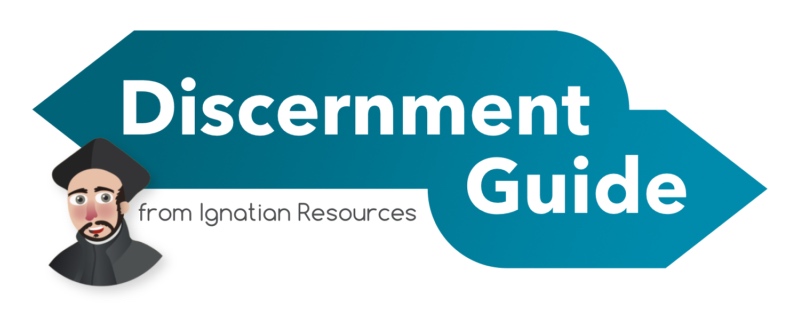I recently took a class called “AI and the Future of Christianity,” and I’ve realised that I’m quite hopeful about artificial intelligence, especially compared to many others around me. I often use AI as a creative partner—helping me brainstorm, organise tasks, and explore new ideas. To me, generative AI—the kind we’ve seen exploding into public use over the past couple of years—feels like a powerful tool for exploration and creativity.
But I also understand why others feel anxious about it. Many people are concerned about the potential misuse of AI—things like academic dishonesty, spreading misinformation, or causing people to become complacent. Others worry AI might take away something special about human creativity or even what it means to be human.
What’s interesting, though, is that these anxieties seem especially Western. In many East Asian societies, people embrace AI more openly. For instance, AI helps some people process grief by maintaining conversational connections with deceased loved ones. Elsewhere, AI provides spiritual guidance, answering religious questions where religious freedom is restricted. While some of us in the West might find these uses unsettling, Eastern philosophical and spiritual traditions often have a less fearful relationship with technology compared to Western Christianity.
 Christian Dualism
Christian Dualism
This difference invites us to take a closer look at some of the dualistic thinking that’s deeply rooted in Western Christianity—including in Ignatian spirituality. Dualism is simply the tendency to see things in clear, opposing categories—like spirit versus matter, sacred versus secular, or human versus machine. Western Christianity has inherited much of this dualism from Greek philosophy, which tends to separate the spiritual from the material.
This dualistic worldview can lead to anxiety when facing technologies like AI, which blur the lines we’ve drawn between humans and machines. Even Ignatian spirituality, with its emphasis on discernment, sometimes uses dualistic ideas—like consolation versus desolation, or the “good spirit” versus the “evil spirit.” These frameworks are useful for spiritual decision-making but can sometimes reinforce an “us-versus-them” attitude toward technology.
Christian Non-dualism
However, Christianity also has a rich tradition of non-dualistic thinking that can help us approach AI in a more integrated way. Take the Trinity, for example: three persons in one God, highlighting relationship and unity rather than separation. This can be challenging for many in the West to grasp, as we often understand “persons” as entirely separate individuals, rather than as distinct identities defined through their interrelationship. Archbishop Desmond Tutu captured this beautifully with the idea of “Ubuntu”: “Ubuntu speaks particularly about the fact that you can’t exist as a human being in isolation. It speaks about our interconnectedness. You can’t be human all by yourself.” This suggests our humanity only makes sense within relationships.
 Early Christian mystics also spoke of God being present everywhere—not separate from the world, but deeply embedded in it. Celtic Christianity saw divine presence in all aspects of creation, and Jesus himself constantly challenged dualistic thinking with teachings like “the first shall be last” or “lose your life to find it.” His incarnation shows us there’s no real separation between the material and the spiritual.
Early Christian mystics also spoke of God being present everywhere—not separate from the world, but deeply embedded in it. Celtic Christianity saw divine presence in all aspects of creation, and Jesus himself constantly challenged dualistic thinking with teachings like “the first shall be last” or “lose your life to find it.” His incarnation shows us there’s no real separation between the material and the spiritual.
Franciscan theologian Ilia Delio encourages us to see everything, including technology, as interconnected parts of a greater whole. Inspired by Pierre Teilhard de Chardin, she sees evolution—and technological advancement—as potentially participating in God’s ongoing creative work. Instead of fearing that AI might cross boundaries between human and machine, we can ask how it might help us deepen our relationships and grow spiritually.
Non-dualism in Ignatian Spirituality
Ignatian spirituality itself contains non-dualistic insights. Saint Ignatius teaches us to find God in all things, meaning there’s no division between sacred and secular. His “Contemplation to Attain Love” guides retreatants to experience God’s presence deeply embedded in every part of creation, from elements and plants to animals and humans—not separate from them but actively present and working within them. Additionally, Ignatius’ concept of humility describes a “Third Degree of Humility,” where we move beyond simple binaries like success or failure, comfort or suffering, desiring instead to identify closely with Christ, even in hardship—not because suffering itself is the end, but because sharing in the love-relationship, whatever it brings, is what’s important.
This Ignatian approach can help us rethink our questions about AI. Rather than worrying whether technology is “from God” or not, we can ask deeper questions: “Where is this technology leading me?” or “How does it affect my relationships with God, others, and creation?” This kind of proactive discernment helps us avoid fear-based reactions and instead thoughtfully engage with new technologies.
Proactive Discernment
Historically, the Church often responds slowly or defensively to technological changes. But by embracing this more holistic, non-dualistic approach, we can take the lead in thoughtfully discerning technology’s role in our lives. Learning from Eastern traditions—such as Confucianism’s focus on relationships, Buddhism’s recognition of interdependence, and Taoism’s comfort with paradox—we can approach AI with less anxiety and more curiosity.
As followers of Ignatian spirituality, we’re invited not to retreat from new developments like AI but to thoughtfully engage with them. We’re called to cultivate a spiritual freedom—Ignatian indifference—that doesn’t blindly celebrate or fearfully reject technology but discerns how it might draw us deeper into relationship with God and neighbour. The Principle and Foundation reminds us that everything, including artificial intelligence, should be embraced if it helps us fulfil our purpose: deeper union with God, our neighbours, and all of creation.
Related posts:
Listen to the podcast version of this post…








Love your website and the message you are spreading.